Sealife guideThe leopard sharkTriakis semifasciata
Taxonomy
- Common name: Leopard shark
- French name: Requin léopard
- Spanish name: Tiburón leopardo
- Scientific name: Triakis semifasciata (Girard, 1855)
- Family name: Triakidae
- Order name: Carcharhiniformes
- Class name: Elasmobranchii
Description
The leopard shark is characterized by its distinctive spotted pattern, which is how it got its name. Its back is dark gray to brown, covered with dark, horseshoe-shaped spots, while its belly is white. Its body is sleek, with a relatively small head in comparison to its body.
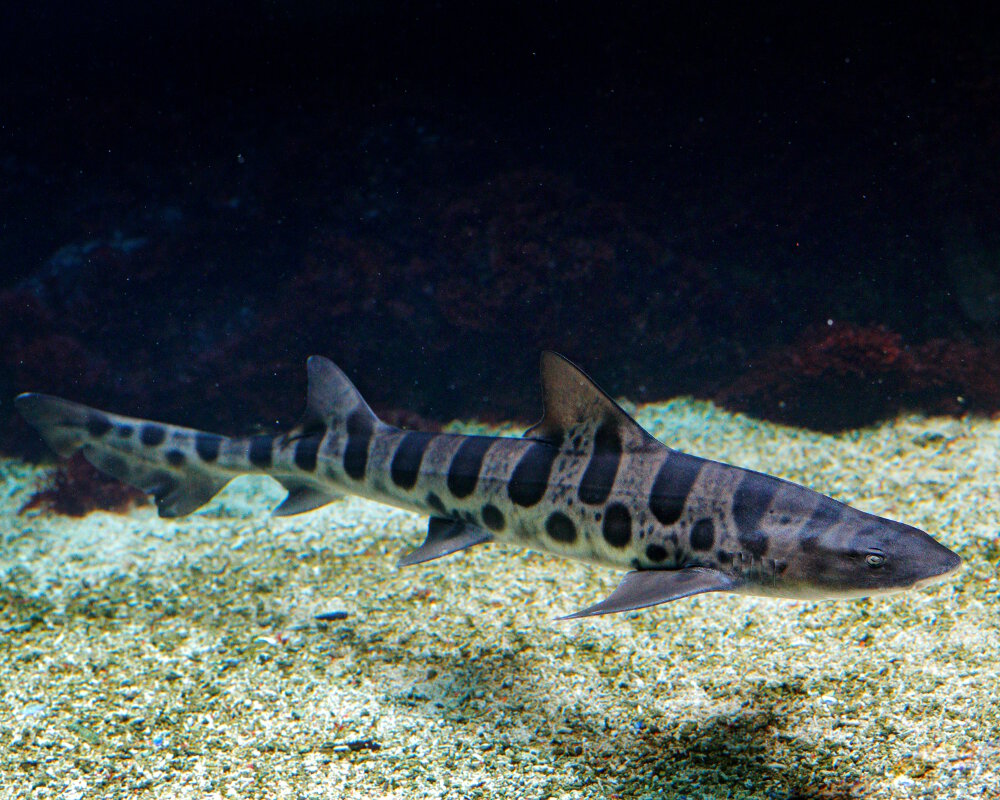
The leopard shark (Triakis semifasciata) © Ondřej Prosický | Dreamstime.com
As adults, leopard sharks typically reach a length between 4 and 6 feet with females generally being larger than males.
Range
The leopard shark frequents the coastal waters of North America, from Canada in the north to Baja California in Mexico to the south.
Habitat
The leopard shark lives in the shallow coastal waters of bays and estuaries, where it spends most of its time near the seafloor. The leopard shark can also be found at greater depths.
Diet
The leopard shark is primarily piscivorous, feeding on small fish, squid, rays and other marine organisms it finds near the seafloor. It is considered an opportunistic predator, meaning it easily adapts to different food sources depending on the availability of prey.
Reproduction
The leopard shark is an ovoviviparous species. After a gestation period of about 10 months, the female gives birth to litters of 10 to 30 baby sharks.
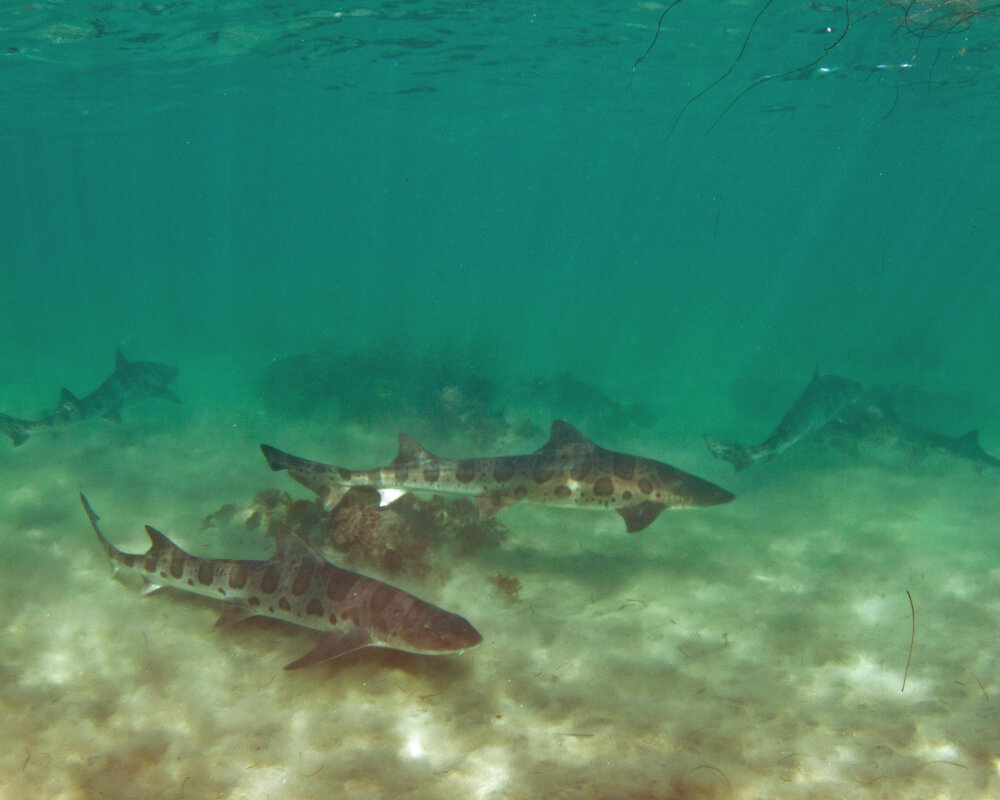
A group of leopard sharks swims close to the seafloor in the Monterey Bay Marine Sanctuary © Yisi Li | Dreamstime.com
Within the same genus

Banded houndshark
(Triakis scyllium)
(Triakis scyllium)
Explore also
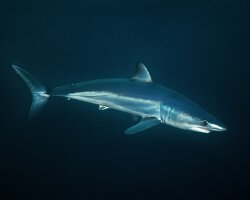
Longfin mako
(Isurus paucus)
(Isurus paucus)

Caribbean reef shark
(Carcharhinus perezi)
(Carcharhinus perezi)
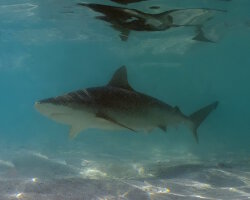
Blacknose shark
(Carcharhinus acronotus)
(Carcharhinus acronotus)
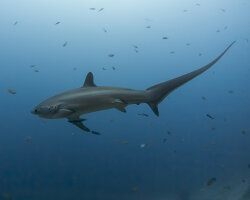
Pelagic thresher shark
(Alopias pelagicus)
(Alopias pelagicus)

Leopard catshark
(Poroderma pantherinum)
(Poroderma pantherinum)

Dark shyshark
(Haploblepharus pictus)
(Haploblepharus pictus)
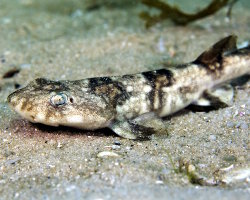
Puffadder shyshark
(Haploblepharus edwardsii)
(Haploblepharus edwardsii)
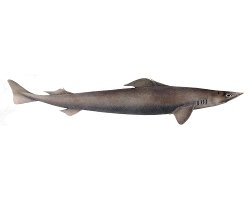
Leafscale gulper shark
(Centrophorus squamosus)
(Centrophorus squamosus)
Our latestUpdates
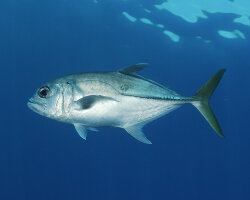
Monday, April 14th 2025
The bigeye trevally
The bigeye trevally has a silver-colored body with, as its name suggests, larger eyes compared to other trevally species. It is distinguished from other trevally species by the slightly yellowish color of its tail.

Monday, April 7th 2025
Best things to do in Miami
A flagship city of Florida, Miami is a dream destination where paradise beaches, a vibrant Latino atmosphere and a buzzing nightlife come together. With its year-round sunshine, iconic Art Deco architecture and dynamic cultural scene, Miami has everything to captivate travelers in search of escape.

Sunday, March 23rd 2025
The plumose sea anemone
The plumose sea anemone is a key species in temperate and cold marine ecosystems. Its high adaptability, morphological diversity and reproductive strategies make it a crucial organism for understanding biological and ecological interactions in marine environments.
Photo of the Day
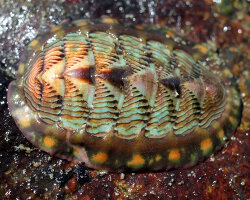
Chiton rouge ligné
(Tonicella lineata)
(Tonicella lineata)
